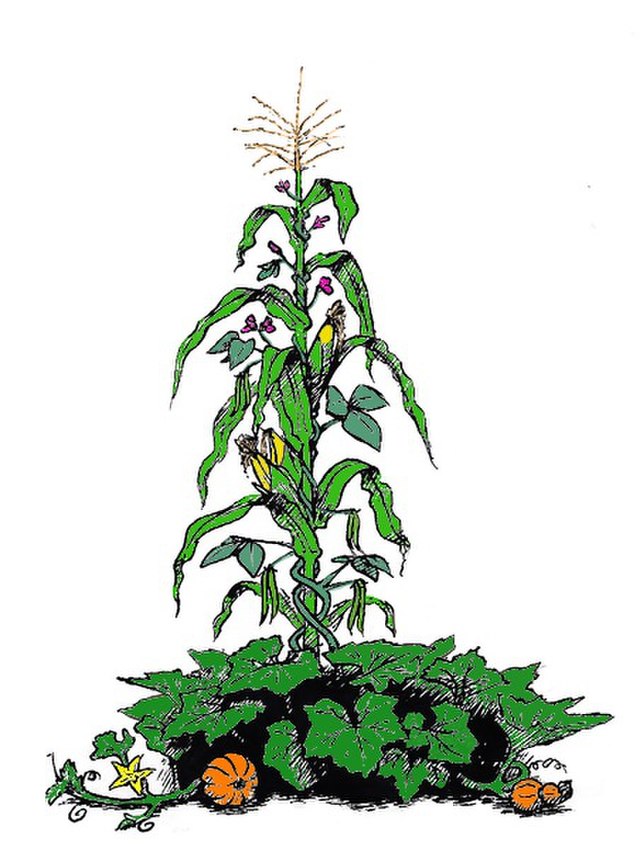
Three Sisters Planting, wikimedia commons
The Three Sisters Native American method of planting ensured that good harvests could be repeated annually.
A mound of earth was created approximately 2 feet in diameter, and a fish was buried in the center of the mound. As the fish decomposed, it acted as a fertilizer for the mound. Corn was planted in a circle around the fish. Climbing beans were planted and allowed to climb up the corn stalks. Beans are nitrogen fixing plants, and thus provided support to the corn plants. The final outer circle was planted with squash which grows quickly, and the leaves of the squash plant provide shade to the roots of the bean and corn plants, thus helping to retain water in the mound.
The Native Americans taught this method to the settlers who used it to ensure good harvests. If corn is planted without the three sisters method, it tends to strip the soil of nitrogen, making it necessary to allow fields to go fallow for at least a year before planting again.
Documents show that the DWIC was encouraging the planting of corn in 'hills' or 'mounds' as done in the 3 sisters planting style: https://iarchives.nysed.gov/xtf/view?docId=tei/A1875/NYSA_A1875-78_V16_…;
See corn for more information about the foodways of the Native Americans.
For more information about the archeology of plants in New Amsterdam please see: https://encyclopedia.nahc-mapping.org/document/de-halve-maen-2022-3d-reconstruction-seventeenth-century-new-amsterdam-garden-joel-w
See a detailed article on the archeology of plant life in New Amsterdam by Joel Grossman, PhD., courtesy of the Holland Society of New York here.

